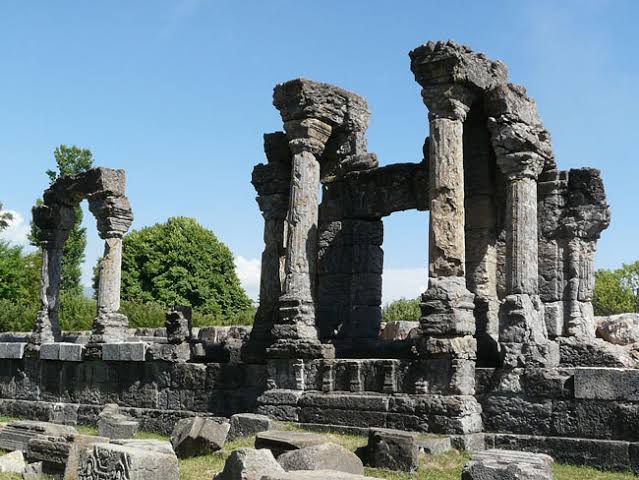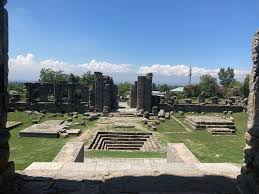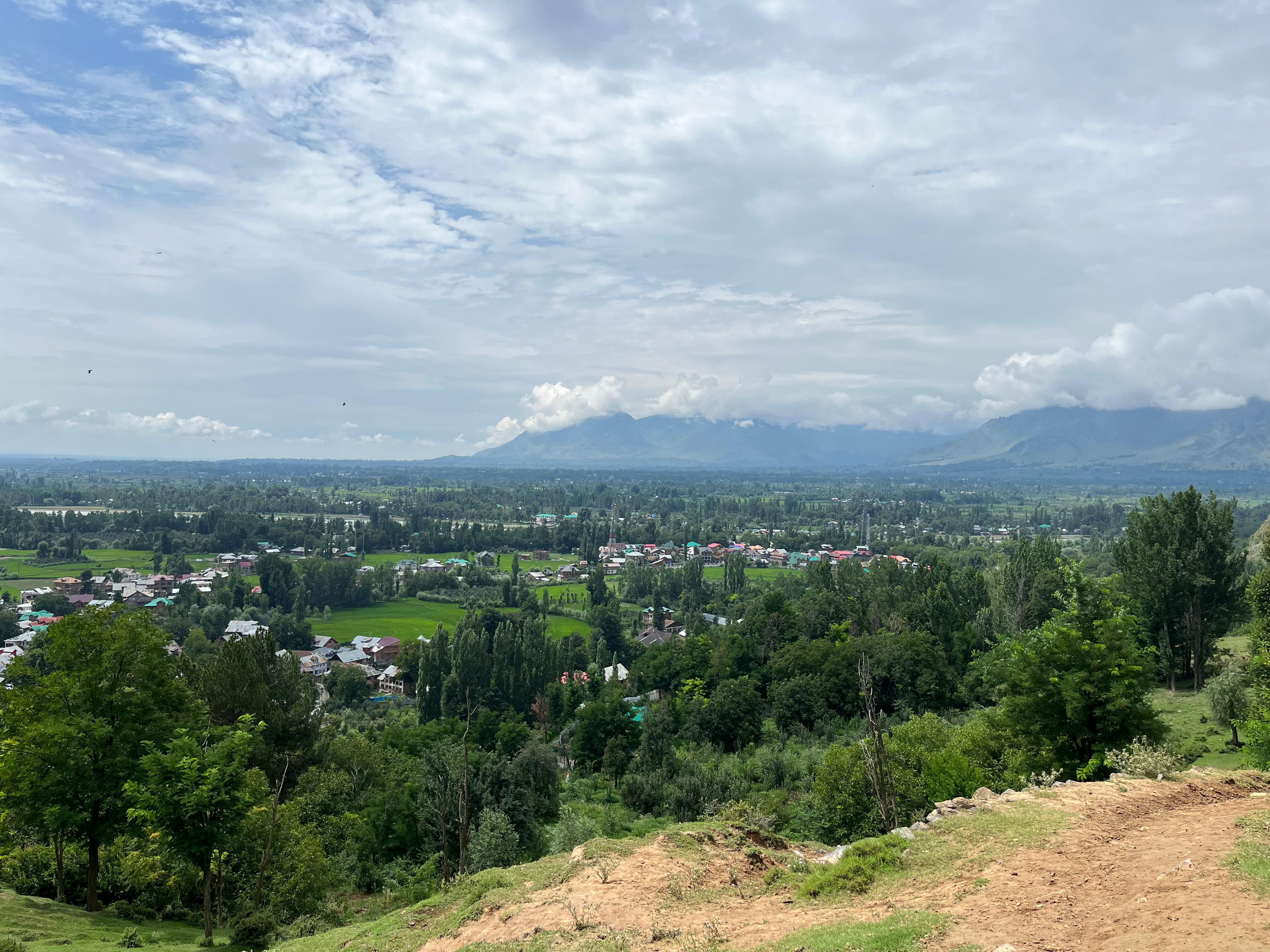Description
Introduction
Mattan is a scenic village located in the Anantnag district of Jammu and Kashmir, India. Known for its serene ambiance and deep historical and cultural significance, it serves as a notable religious hub, drawing both pilgrims and tourists alike. The village’s connection to ancient history, particularly through the famous Martand Sun Temple, has made it an important destination in the Kashmir Valley.
Historical and Religious Significance
-
Martand Sun Temple:
- Mattan is historically significant due to its proximity to the Martand Sun Temple, a masterpiece of ancient Kashmiri architecture. Built in the 8th century by King Lalitaditya of the Karkota Dynasty, the temple is one of the grandest sun temples in India. It showcases the architectural fusion of Gandharan, Gupta, and local Kashmiri styles.
- The temple, originally dedicated to Surya (the Sun God), was later partially destroyed by Sultan Sikandar during the 14th century Islamic conquests. Despite its ruins, the site continues to attract admiration for its architectural splendor.
-
Mattan Temple:
- Mattan is also home to another significant religious site—the Mattan Temple, dedicated to Lord Surya. It remains a revered pilgrimage destination, particularly for Kashmiri Pandits. The sacred springs in Mattan, believed to have purifying and healing powers, add to the religious significance of the village.
Geography and Natural Beauty
- Location and Accessibility:
- Mattan is located approximately 6 km from Anantnag town, making it easily accessible for visitors. Surrounded by lush green valleys and picturesque landscapes, the village offers a tranquil atmosphere, perfect for both spiritual reflection and relaxation.
- Natural Springs:
- The village is famous for its natural springs, which hold religious and cultural importance. Pilgrims often visit these springs as part of their religious journey.
Cultural Importance
- Religious and Scholarly Center:
- Over the centuries, Mattan has been an important center for Hindu scholars and sages. It has been a focal point of spiritual activities, particularly for those following Shaivism and other Vedic traditions.
- Communal Harmony:
- The village is known for its communal harmony, with both Hindus and Muslims living together peacefully. This coexistence reflects the broader cultural fabric of the region, where multiple religious traditions have influenced the local culture.
Tourist Attraction
- Spiritual and Historical Significance:
- In addition to its religious essence, Mattan also attracts tourists interested in ancient history, particularly those fascinated by the Martand Sun Temple and its ruins. The village’s tranquil atmosphere, combined with its connection to ancient Kashmiri culture, makes it a must-visit destination for those exploring the region.
Urbanization and Population in Mattan
-
Urbanization:
- While Mattan retains a rural character, it benefits from its proximity to Anantnag town, which influences its development. However, urbanization in Mattan is minimal, with the focus on preserving its religious and historical sites rather than large-scale infrastructure development.
- The village’s development has been largely driven by tourism, with small-scale improvements such as lodging facilities to cater to visitors.
-
Population:
- As of the 2011 Census of India, Mattan’s population was around 10,738 people, with the population likely having increased slightly in the years since. The village has a mix of Hindus and Muslims, although the demographic shifted in the 1990s due to the exodus of Kashmiri Pandits.
- Livelihoods: The majority of Mattan's population is engaged in agriculture, small businesses, and tourism-related activities.
Urban Challenges
- Infrastructure Limitations:
- Mattan faces challenges related to limited infrastructure and public services. As a small village, its development has been slower compared to more urbanized areas.
- Preservation of Religious Sites:
- There is an ongoing effort to preserve the historical and religious sites, such as the Martand Sun Temple, while managing the increasing demands of tourism.
History of Mattan, Jammu and Kashmir
-
Early Mentions and Name Origin:
- The name “Mattan” is derived from “Martand,” which means the Sun God in Sanskrit. The town is mentioned in ancient Kashmiri texts, including the Rajatarangini, a historical chronicle by Kalhana.
- Mattan has been a focal point for Kashmiri Shaivism and Vedic traditions throughout history.
-
Martand Sun Temple:
- The Martand Sun Temple, built by King Lalitaditya Muktapida in the 8th century, remains one of the most iconic ancient monuments in Kashmir. It was a prominent center of worship for Surya, the Sun God, and attracted numerous devotees and scholars.
- The temple’s architecture, with its blend of Gandharan, Gupta, and Kashmiri styles, is a symbol of the cultural and artistic excellence during the Karkota Dynasty.
-
Religious Shifts and Islamic Influence:
- The region experienced a shift in religious dominance with the Islamic conquests in the 14th century. Sultan Sikandar’s campaign led to the partial destruction of the Martand Sun Temple, which marked the decline of Hinduism in the region.
- Despite this, the temple's ruins remain a testament to the architectural grandeur of Kashmir’s past.
-
Modern Era:
- In the 20th century, efforts were made to preserve the ruins of the Martand Sun Temple under the Archaeological Survey of India (ASI). Today, the site continues to attract both religious pilgrims and history enthusiasts, making Mattan a popular destination in Kashmir.
Mattan, with its spiritual depth, historical landmarks, and natural beauty, continues to hold a special place in the cultural and religious landscape of Kashmir.
Photos
Location Map
Amenities
- Accommodation Facility
- Pujari Details
- Timings
Contact Information
| Phone Number |
7889697904 |
| Email Address | |
| Website | https://jkpanchayat.jk.gov.in/panchayatdataview.php?panchayat=Matipora&block=Anantnag |
Reviews (2)


The content provided about the village is good and the efforts made are clearly visible.




























Great presentation